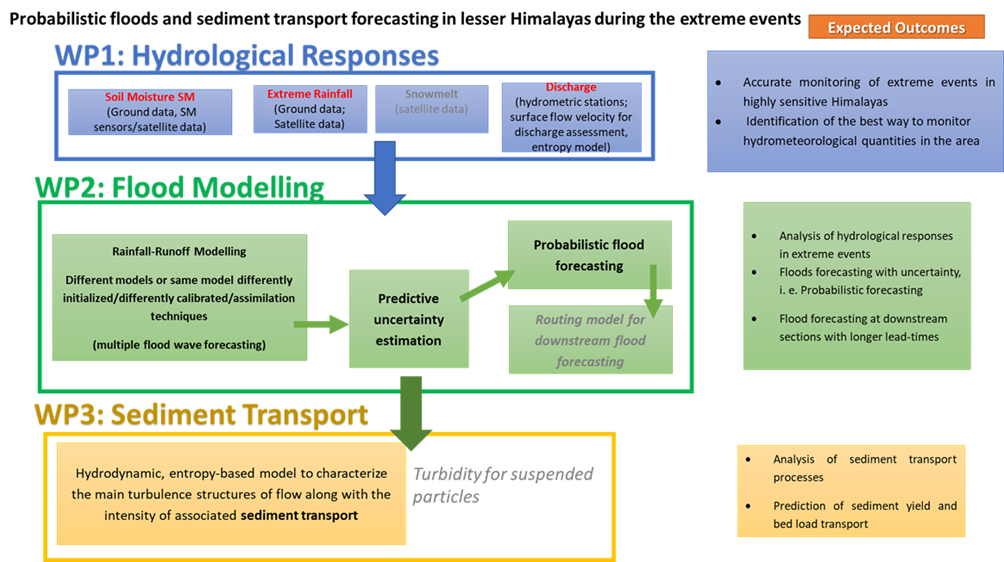Probabilistic FLOods and SEdiment Transport forecasting in the Himalayas during the extreme events
Significant Project – Italy-India Joint Science and Technology Cooperation – Call for Joint Project Proposal for the years 2021-2023
Period: January 2022 – December 2024 (36 months)
Partners: Italian partner CNR-IRPI; Indian partner IIT-Roorkee
Description: The tectonically active younger Himalayas is home to India’s large population. The precipitation-fed rivers, like Ganga and Yamuna, are the primary sources of freshwater in the region. The impact of global warming coupled with anthropogenic forcing on the Indian monsoons modified the precipitation characteristics of the Indian subcontinent leading to an increase in extreme events. The hydrological response of the Indian Himalayas to extreme precipitation events in terms of rainfall-runoff generation, flash floods, and sediment transport, which include large boulders and cobbles, is relatively lesser understood. The accurate forecast of such processes is a significant challenge requiring a real-time high-resolution precipitation dataset, limited in the Himalayas. This study aims to unveil the Himalayas’ response in terms of runoff and sediment dynamics to extreme precipitations. Advanced hydrological models, machine learning techniques, and sediment transport models will be jointly used with advanced ground hydro-meteorological monitoring techniques and a new era of satellite measures soil moisture, snow, discharge. The low hydro-meteorological network density and the region’s peculiarity pose significant challenges for the prediction of these extreme events. The wealth of tools and data the project aims to put in place requires them to be synergistically used to minimize the forecast uncertainty and to obtain reliable flood and sediment forecasting. Since no forecasting model is able to perfectly predict the future scenarios with certainty, the project would involve the use of a Bayesian-based Predictive Uncertainty tool.
The development of an effective probabilistic flood and sediment transport forecasting system is the principal aim of the project. The system could usefully support the stakeholders in hazard management for countering the losses during extreme events, and this could be extended for application in similar areas with limited data availability.

